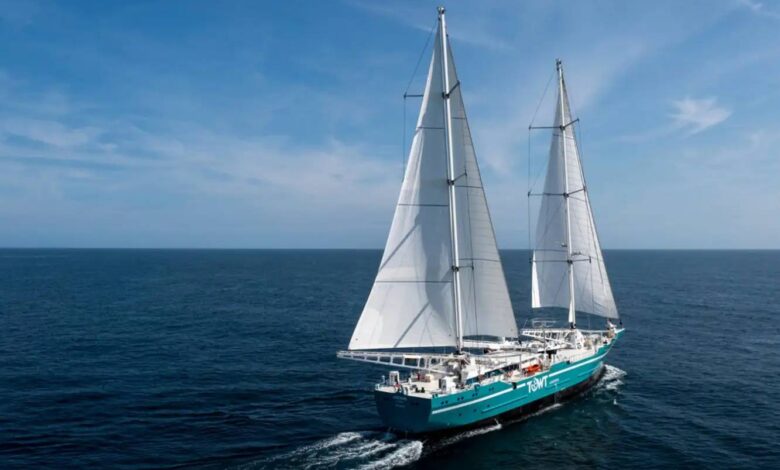
Anmos, the world’s largest sailing cargo ship, is making its maiden voyage across the Atlantic Ocean. This ship left a port in France in early August and is on its way to deliver a thousand tons of cargo to New York by September 3rd. These shipments have a carbon footprint of one-tenth compared to standard container ships.
CEO of French company TOWT, which operates the 81m Anmos, says that for centuries we have known that wind is abundant in the deep seas and we have had the maps to guide it. But now, thanks to satellite communications and wind-tracking technologies, it’s also predictable, making it a reliable source of propulsion.
Anmos is not an ancient seafaring ship. According to New Scientist, its fabric sails are erected and managed with the help of an automatic system, and its sail control system is inspired by ocean racing ships and designed using computer simulations. This system allows Anmos to produce less than two grams of carbon emissions by transporting one ton of cargo per kilometer. Thus, the carbon footprint of Anmos is ten times less than the large container ships that carry most of the world’s goods and produce at least 20 grams of carbon per ton of cargo per kilometer.
When the ship relies primarily on wind power, it can reach speeds in excess of 19 kilometers per hour, and possibly even faster in stronger conditions such as the North Atlantic trade winds. For backup propulsion, the ship uses two diesel-electric engines.
ANMOS is part of a planned fleet of eight ships that will eventually be able to move 200,000 tons of cargo each year and emit 40,000 tons less carbon than conventional ships. However, it is difficult to determine the full impact of sailing cargo ships and liquid carriers that use wind-assisted propulsion technologies.
According to a recent report by Lloyd’s Register UK, the first uncertainty is actual fuel economy; Because there is no standard criteria for confirming claims. Potential costs associated with wind-based propulsion, including the scope of engineering work and operational costs, also add to uncertainty about the economic side of these vessels.
Despite the uncertainties, the report also predicts that 100 ships will use wind propulsion in the coming years. Such sustainability measures can help the shipping industry move closer to the goal of net zero emissions.








